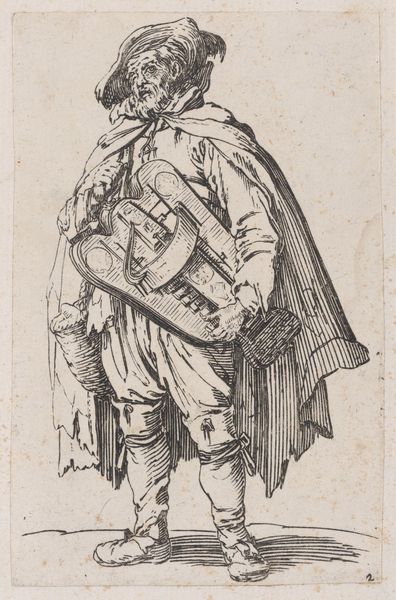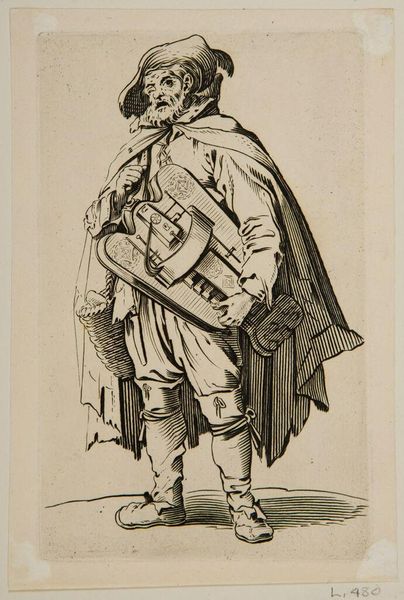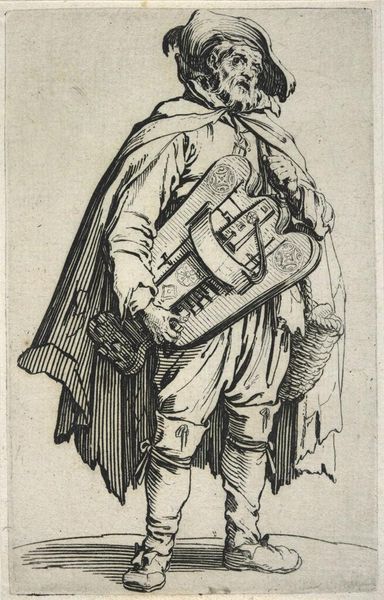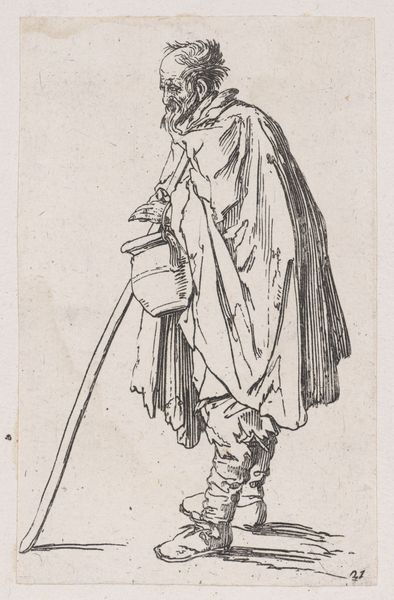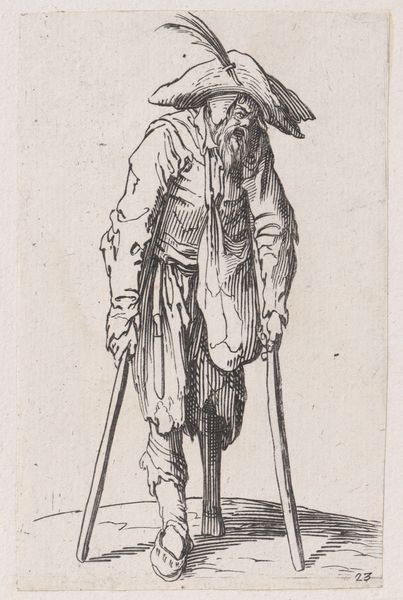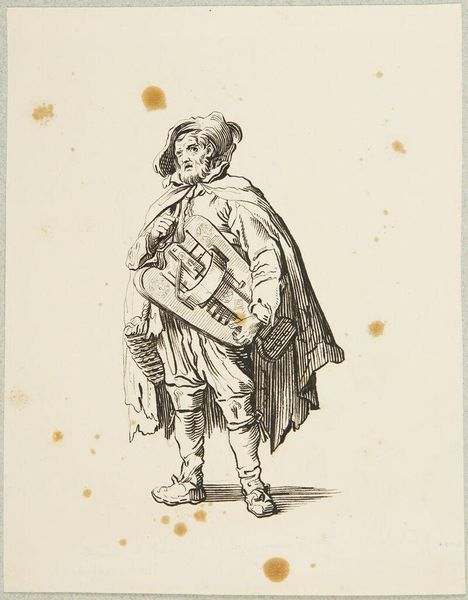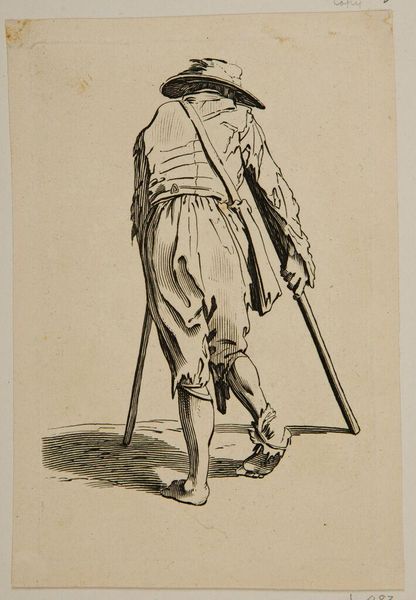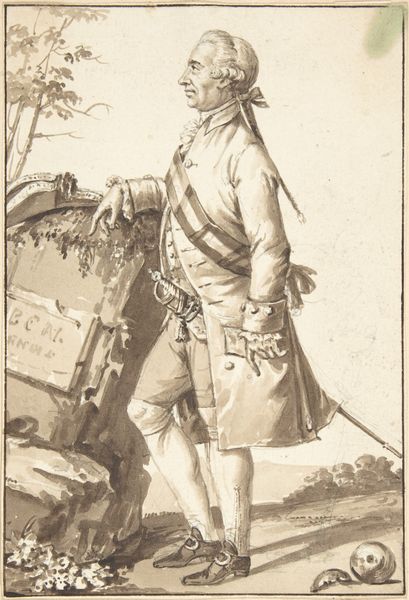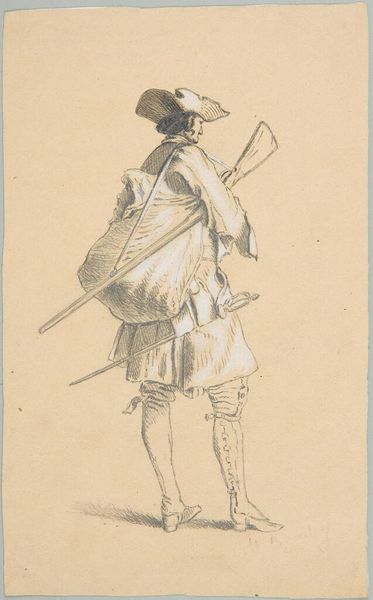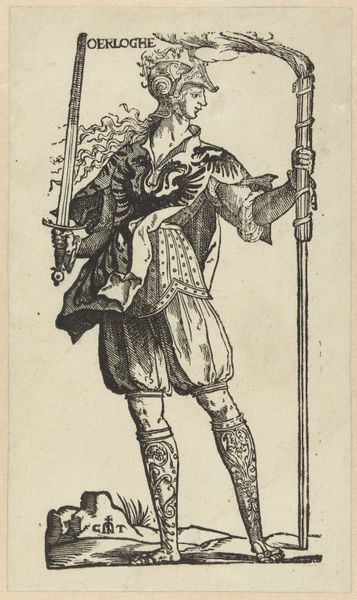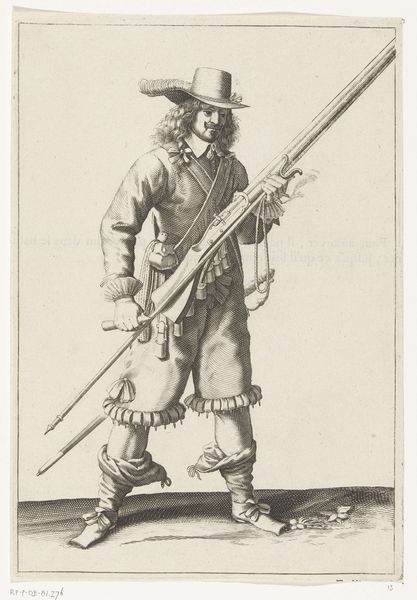
Reverse Copy of Le Joueur de Vielle (The Hurdy-Gurdy Player), from "Les Gueux suite appelée aussi Les Mendiants, Les Baroni, ou Les Barons" (The Beggars, also called the Barons) 1625 - 1700
0:00
0:00
drawing, print, etching
#
portrait
#
drawing
#
baroque
# print
#
etching
#
figuration
#
men
#
genre-painting
Dimensions: Sheet: 5 1/2 x 3 11/16 in. (14 x 9.4 cm)
Copyright: Public Domain
Curator: Well, this strikes me as a man down on his luck, trying to make a tune, maybe for a little spare change. It’s all etched in stark lines, all hardship and weary movement, really. Editor: That's a strong initial read. This print, held here at the Metropolitan Museum, is a reverse copy of "The Hurdy-Gurdy Player" from a series titled "The Beggars, also called the Barons." Although anonymous, it originates sometime between 1625 and 1700, crafted using etching techniques. It’s a snapshot of a specific socio-economic group, of course. Curator: Snapshots aren't always pretty! Look at those textures – the raggedy cloak, the clunky hurdy-gurdy itself – each line screams 'lived in'. He’s hauling his music and… is that a basket? Maybe gathering scraps? It's almost Beckett-esque, a weary pilgrimage of the soul expressed with such blunt, almost cruel honesty. Editor: Exactly. Consider the role of prints during this period. They made images like this, initially conceived by artists such as Callot, accessible to a broader public. This image circulates commentary and perhaps stereotypes, raising complex questions about how these 'beggars' were perceived and treated by wider society. The "Beggars" series becomes an active participant in a societal narrative. Curator: And doesn’t the anonymous nature of the printmaker underline this point further? It's as though the artist wanted to simply channel the story of this anonymous player, not necessarily assert individual artistry. Editor: Precisely. An individual's artistry here arguably bows to the weight of social representation. Curator: But also to a kind of melancholic beauty? I keep returning to his face. You can almost hear the music – tinny, perhaps off-key – drifting on a cold street. The man's stoicism mixed with his vulnerability are somehow profoundly moving. Editor: A very poignant and personal interpretation that highlights the humanity represented here and offers a space to consider both the beauty and potential biases we bring to works of this period. Curator: It really makes one reflect. Editor: Indeed.
Comments
No comments
Be the first to comment and join the conversation on the ultimate creative platform.
